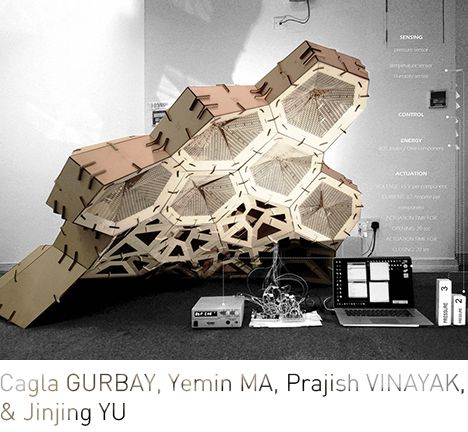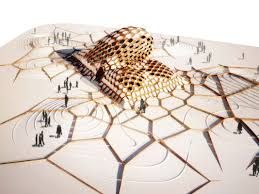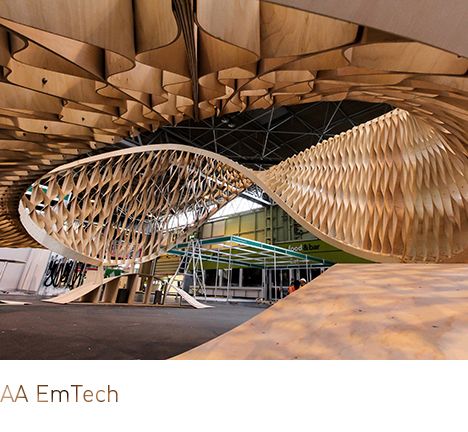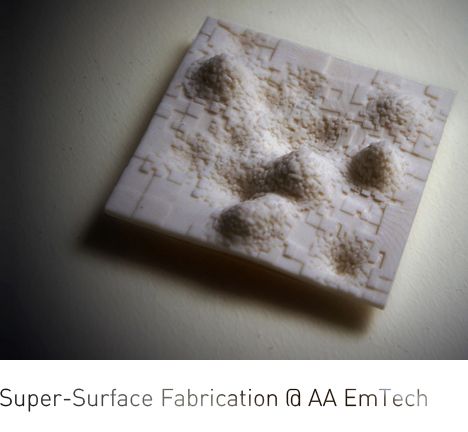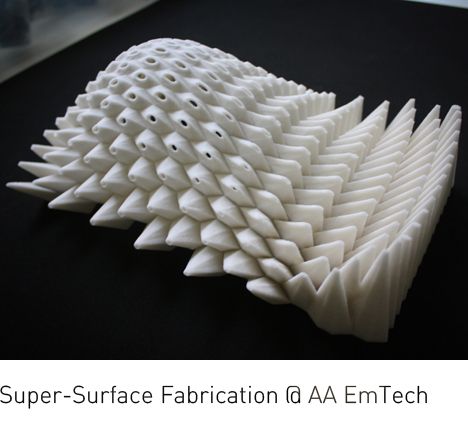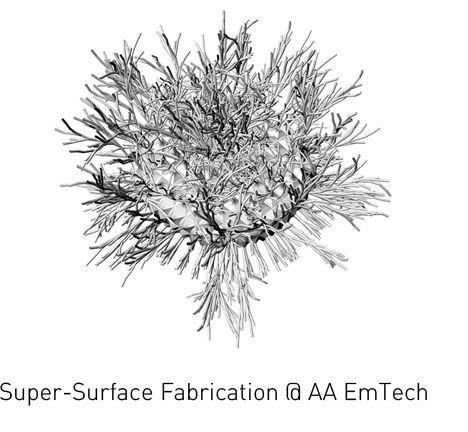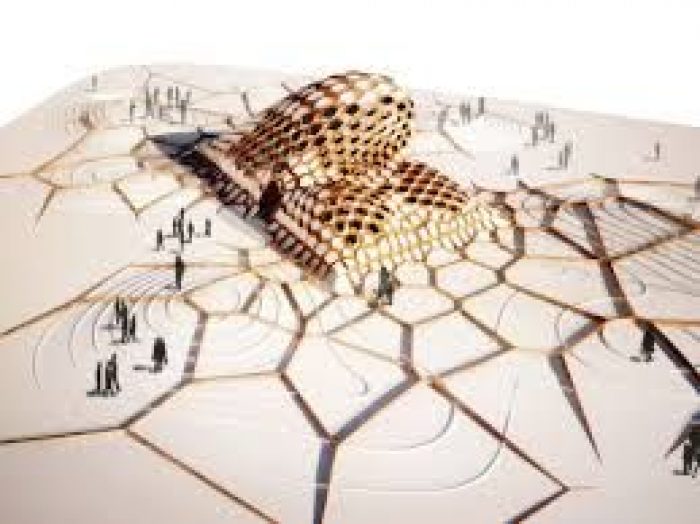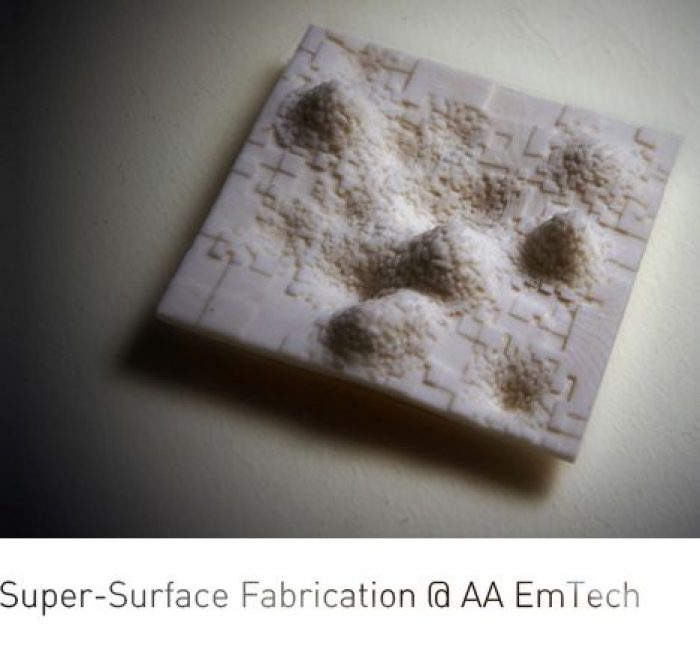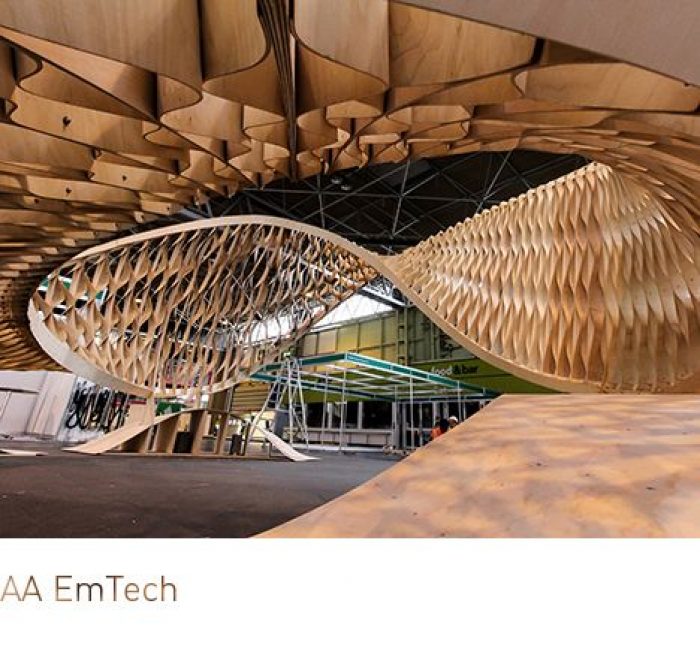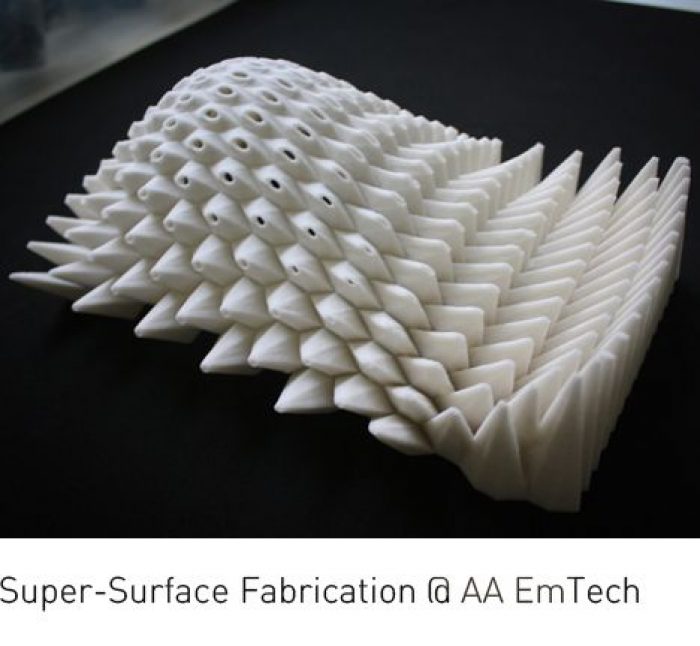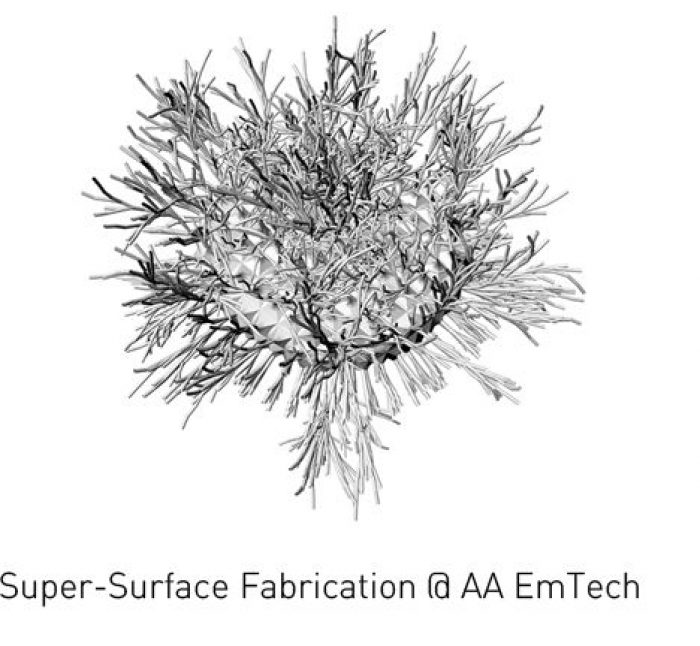Aerodynamic Microclimate AA EmTech Dissertation
Cagla Gurbay (MSc,TR), Yemin Ma (MSc, CH), Prajish Vinayak (MArch, IN) and Jinjing Yu (MArch, CH) of the AA School of Architecture in London, United Kingdom present “Aerodynamic Microclimate”, an investigation into the control of heterogeneous microclimates through wind-driven evolutionary computation process for natural ventilation efficiency by dynamic material system. The project took place from 29 April- 20 September 2013. Scroll down further to see the creative process behind “Aerodynamic Microclimate”.
The MSc Phase marked its completion with the book submission and dynamic physical model as part of final proposal. The MArch Phase continues by Prajish Vinayak and Jinjing Yu. The main focus of the project was the ways of responding the heterogeneous thermal demand of the occupancy variation. For the varied requirements of human comfort, the envelope system was set to be adaptive. From global form to dynamic material system, the efficiency in natural ventilation was sought. The precedents in this domain have rarely dealt with adaptability in each phase of design and holistic optimisation which were attempt in this project.
Additionally, the clustered controlled multiple parameters of interior heat and humidity was achieved in a single system by sensory data input. The methodology was set on evolutionary computation with tools of Grasshopper and Rhinoceros. The performance evaluation was always tested with computational fluid dynamics software. The material limits were set with the looping information structure of finite element analysis results and physical material experiments. The high level integration of performative features in the system was achieved by incorporating environmental, corporeal and structural efficiencies through computational and physical tests. The developed system was tested in a tropical climate model, Petrolina, Brazil as an architectural design proposal.
” The Aerodynamic Microclimate project explored the themes of biomimicry, emergence, sustainability, evolutionary computation, system control logics, kinetic design, interactive design and large-scale fabrication technologies. The adaptive material system explorations reflected the anisotropic property of plywood and smart behaviour of shape memory alloy. The physical and computational toolset of the fabrication process were CNC milling, composite material production and smart material activation by Arduino micro-controller.”
” The part of global geometry from the architectural proposal was fabricated to test the system in reality. Model includes all system elements; fabrication technology, external stimuli, receptor, control, energy and adaptation. Clusters of components represent different architectural spatial quality. As the basic research topic suggests, this heterogeneity of responsive behaviour of opening and closing according to the heat and humidity values of interior spaces was necessitated by various human comfort requirements in the project. As a final stage, the investigation of the effect of differentiated opening configurations was finalised.”
CREDITS:
Program Director: Michael Weinstock
Tutors: Michael Weinstock, George Jeronimidis, Evan Greenberg, Angelos Chronis
Team: Cagla Gurbay (MSc,TR), Yemin Ma (MSc, CH), Prajish Vinayak (MArch, IN) and Jinjing Yu (MArch, CH)
